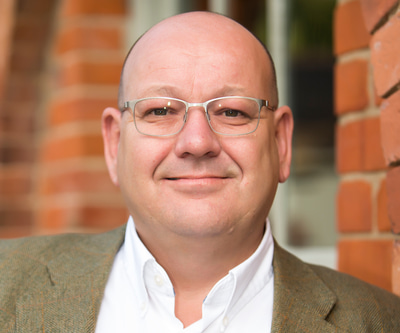- OT
- Industry
- High Street
- An additional revenue stream for practices
Behind the brand
An additional revenue stream for practices
Eyeplan commercial director, Chris Clemence, and managing director, Simon Mills, discuss the increased uptake of eye care schemes and the roll-out of Opti
7 min read

Getty/Thomas Northcut
16 April 2022
What is Eyeplan? What makes your service unique?

Chris Clemence
We’ve been doing this for about 23 years. The idea was born out of our sister group of practices, Eyetech, where Simon is also the managing director, so the foundation is very much for opticians, by opticians.
We really started to grow in the early 2000s. The initial challenge was persuading practices that the eye care scheme was a good thing. Over the last two or three years, we’ve really seen the case for it proven.
The profile of target patients for Eyeplan is 40 to 70. That reflects the kinds of patients you see in independent practices. As people mature they become more aware of their health, presbyopia happens, and so they respect and require care. Eyeplan gives the practice the ability to provide that without having to worry too much about the money question.
The Eyeplan journey
Simon Mills, managing director (SM): We developed the scheme because of challenges in our local area, as a result of the nature of Specsavers that was coming to the fore in the mid-90s. We realised we needed a mechanism by which we could look after our patients better.
Not everyone wants the cheapest, and not everyone wants the most expensive. People want what they can afford, but what they like more than anything else is being looked after.
Eyeplan came into a very sceptical optical marketplace. But we can see from our records patients who joined our associate’s schemes 23 years ago, and who are still paying their monthly sums. Clearly it works for them.
This isn’t for everyone, and that is why it is another income stream for practices. It is not a replacement for the existing income stream. It needs to be viewed by a practice as an additional source of revenue. It is all about how you wrap the monthly service into something personalised for individuals.
Not everyone wants the cheapest, and not everyone wants the most expensive. People want what they can afford, but what they like more than anything else is being looked after.
Eyeplan came into a very sceptical optical marketplace. But we can see from our records patients who joined our associate’s schemes 23 years ago, and who are still paying their monthly sums. Clearly it works for them.
This isn’t for everyone, and that is why it is another income stream for practices. It is not a replacement for the existing income stream. It needs to be viewed by a practice as an additional source of revenue. It is all about how you wrap the monthly service into something personalised for individuals.
What services have you launched most recently?
CC: One service we have become involved with is hearing care. There has been a move in the market towards optical practices using audiologists within their practice, either as part of their business or a separate service that rents the space. When it is part of their business, we can offer a hearing plan for those patients.The main thing we have brought to the market over the last few years is the new management platform, Opti. The name is short for ‘options,’ because the platform allows users to easily create tailor-made eye care packages for patients. They can have simple schemes: eye examination and accidental damage cover, or they can build a more complex package. This might include dry eye, myopia management, or additional clinical procedures or enhanced care.
The main thing we have brought to the market over the last few years is the new management platform, Opti. The name is short for ‘options,’ because the platform allows users to easily create tailor-made eye care packages for patients
What can Opti provide for practices?
SM: Direct debit systems is where the business started, as there was really no easy means to set up that process. The point of Opti was to take this to a completely new level.Patients might come in with a number of conditions or issues. They might have dry eyes, diabetes, or be developing cataracts, for example. Any one of those things requires interventions by the practice at different times and the practice has to keep on top of what needs to happen next.

Simon Mills
You need the ability to change individual components of a fee automatically. It’s not possible to do it manually if you have thousands of patients in your practice. The Opti system allows that fine tailoring of the needs of the patients, and of the practitioner, to make sure the patient gets what they need at the right time, with the right amount of money changing hands.
How are you seeing uptake of eye care schemes changing amongst practices?
CC: Uptake has increased dramatically since COVID-19. This has been a driving force through 2021, because people were looking at their colleagues in other independent practices on the High Street who were talking about their Eyeplan income.In the summer of 2020, through the various lockdown periods, I received phone calls from people who were in their empty practices and decided to ring just to thank us. They were grateful for the investment they made in creating the contracted income, and the support we were able to give them in doing that.
We went into overdrive during COVID-19. It was probably one of our busiest periods of patient communications and talking to practices about how to survive and maintain their patient base, but it worked. I think some of our best work has been done in the last three years.
Uptake has also been driven by the General Ophthalmic Services (GOS) fee. I think people are now rapidly moving away from GOS, and it is probably the most common topic I discuss with practices.
What is remarkable about moving away from GOS is that, when practices decide to drop that part of their business, we see a huge uptake in their eye care plans, because patients still want to be a part of that practice. The eye care plans mean that their services can continue to be accessible to them.
Practices are starting to recognise their own value. When I joined Eyeplan in 2006, the private eye examination fee in a practice was very close to the GOS fee. Now it has risen and that increase in charges is a recognition that they are worth that kind of money.
Another thing that is driving practices towards the Eyeplan model is the extension of services that optometrists are able to offer. We are able to do so much more now: OCT, Optomap, and now we are discussing a lot of myopia management schemes.
SM: The premise of Eyeplan was that the arrangement needed to be fair to the optician and fair to the patient. When I say fair, I mean that if you are charging a proper fee that recognises the talents and skills of the optometrist, then you don’t need to be increasing margins on spectacles.
A hybrid approach
SM: Introducing the concept of Eyeplan into a practice isn’t a five minute job. It is a series of simple steps to start with, building on the experience for patients, but you also need to think about things and present them in a different way.
As a practitioner it means you can spend your whole time focusing on the needs and wishes of the patient, rather than worrying whether you have done enough dispensing that day.
Something that can be really depressing for practices is when a patient has put off coming in because they haven’t quite got the money, and then you find they have a quite debilitating problem which is too late to deal with. Taking eye care down to small monthly sums makes a big difference to a practitioner and a big difference to the patient. It doesn’t have to be a fortune, and you can tailor it to the needs and eyes of the individual.
We are very much in the hybrid market. We have associates who have dropped their NHS work because their Eyeplan work has grown so big that they choose to focus on one area.
As a practitioner it means you can spend your whole time focusing on the needs and wishes of the patient, rather than worrying whether you have done enough dispensing that day.
Something that can be really depressing for practices is when a patient has put off coming in because they haven’t quite got the money, and then you find they have a quite debilitating problem which is too late to deal with. Taking eye care down to small monthly sums makes a big difference to a practitioner and a big difference to the patient. It doesn’t have to be a fortune, and you can tailor it to the needs and eyes of the individual.
We are very much in the hybrid market. We have associates who have dropped their NHS work because their Eyeplan work has grown so big that they choose to focus on one area.
What is Eyeplan’s main ambition for the next 12 months?
CC: Our focus for the next 12 to 18 months is to have Opti as standard practice across our family of associates. The roll-out of Opti is about 50% to 60% complete. It is a time consuming process to migrate everybody, which we are doing in small groups each month, but we are steadily converting everybody over. That will be our core activity in the future.We also have a focus to keep adding associates to the Eyeplan family and getting them set up. This is happening currently at a rate of about two or three a week, which is quite high.
SM: There is a learning curve for new associates, and so we spend a lot of time looking after them. As part of the Eyeplan family we also share expertise. You’re not competing for everyone’s patients; it’s about how you look after those people who choose to see you, and make that the best experience it can be.
I’m still as passionate as I was when we first started. The challenge is never ending and I love it. You can’t sit on your laurels and carry on operating the way you did 20 – 30 years ago; you have to be receptive to what your patients want.
Three facts about Eyeplan
- Eyeplan was founded 23 years ago, and the founders, Simon Mills and Fraser Robertson, are still leading the business
- Mills and Robertson were involved in taking HMRC (then HM Customs and Excise) to court in 1995, achieving a VAT repayment back to the industry of £1.2 billion
- Eyeplan’s sister company is the Eyetech group of practices. Clemence said: “We are practising what we preach, and preaching what we practise.”
Advertisement


Comments (0)
You must be logged in to join the discussion. Log in